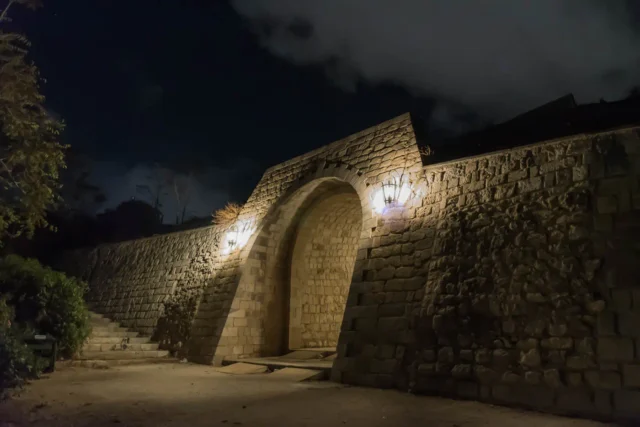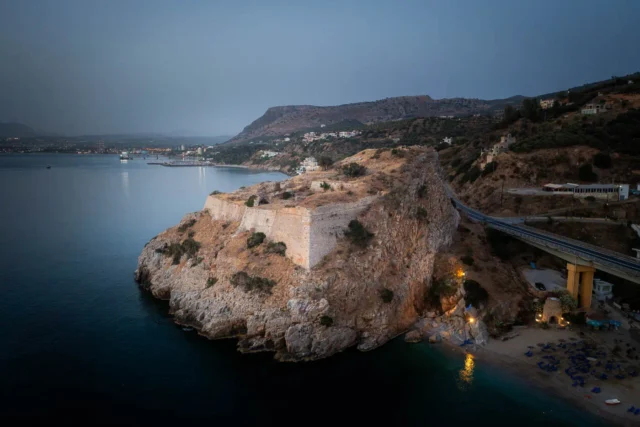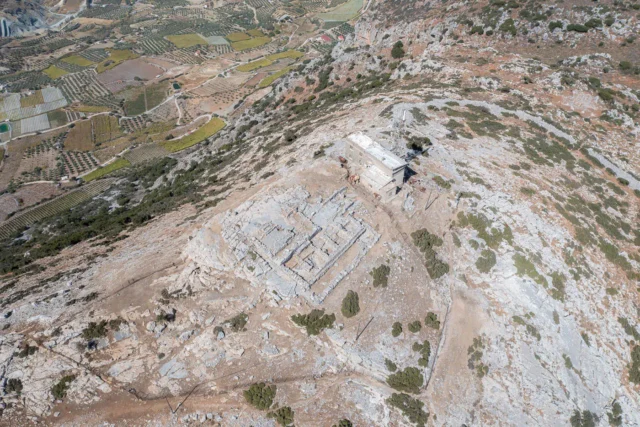The Jesus Bastion and Gate are prominent features of the Venetian walls of Heraklion, Crete, built in the 16th century to fortify the city against threats, particularly from the Ottoman Empire.
The Fortifications of Heraklion
Early Walls
The earliest walls of Heraklion date back to the Byzantine era. In 824, Arab forces captured the city, and they erected walls of unbaked bricks, encircling the city with a trench. The city, then known as Rabdh al-Khandaq (Trench Castle), served as the capital of the Emirate of Crete.
In 961, the Byzantines, led by Nikephoros II Phokas, recaptured Heraklion. They razed the Arab fortifications and built a new fort named “Rokka.” As the settlement expanded, the Byzantines constructed new walls on the site of the previous Arab walls. Remains of these Byzantine walls can still be found near Heraklion’s harbor.
Venetian Walls
In the early 13th century, the Republic of Venice took control of Crete. Initially, they utilized the existing Byzantine walls, making modifications as needed. However, the fall of Constantinople in 1453 and the rise of the Ottoman Empire prompted the Venetians to build a new, more formidable fortification system.
Construction of the new walls began in 1462. The walls were designed by prominent military architects Michele Sanmicheli and Giulio Savorgnan. They were built over a period of a century, and various outworks were added over the years to further strengthen the fortifications.
Ottoman Rule and Modernization
The fifth Ottoman-Venetian War (1645-1669) saw the Ottoman navy arrive off Crete on June 23, 1645. While Canea and the Fortezza of Rethymno fell to the Ottomans, the Venetian garrison in Candia (Heraklion) managed to resist for 21 years, making the Siege of Candia the second-longest siege in history. The city surrendered in 1669, and the Venetians were allowed to leave peacefully, sparing the city from being sacked.
After the Ottoman conquest, the fortifications were repaired and maintained. The bastions were given Turkish names; for example, Martinengo Bastion became Giouksek Tabia. The Ottomans also built a small fort known as Little Koules near the Rocca al Mare (now known as the Koules Fortress). This was later demolished in 1936 during the city’s modernization.
The walls sustained damage from German aerial bombardment during World War II, but the damage was repaired. After the war, some outworks were demolished to make way for modern buildings. There were even suggestions to demolish the entire city walls, but this never happened. Today, the walls remain largely intact, standing as some of the best-preserved Venetian fortifications in Europe.
Jesus Bastion and Gate
The Jesus Bastion and Gate are located on the southern side of the Heraklion Walls. They were named after a nearby church dedicated to Jesus. The bastion was designed to protect the city from attacks from the south. The gate, also known as the “New Gate” or “Porta Nuova,” was built in 1587 and was the last of the four main gates to be constructed.
Architectural Features
The Jesus Gate is notable for its Renaissance architectural style. The inner facade facing the city features a frieze with metopes and triglyphs, decorated with trophies, bucrania, and lions. The outer facade has an arched gateway with four escutcheons and a Gothic monogram.
The gate leads to a vaulted passage about 42 meters long and 5.5 meters wide. On either side of the passage are vaulted rooms that were once used for storage.
Opening for Cars and Rebuilding of the Bridge
In the early 20th century, as Heraklion modernized and automobile traffic increased, the need for greater access through the walls became apparent. To accommodate this, a new opening was created in the walls near the Jesus Gate, and a bridge was built to allow cars to pass through. This new passage became known as the “New Gate” or “Kainourgia Porta.”
However, in the 1970s, the bridge was rebuilt to restore the continuity of the walls and enhance their historical integrity. This decision reflected a growing appreciation for the cultural heritage represented by the fortifications.
Opening to the Public
The Jesus Gate has been restored and is now open to the public. It houses a permanent exhibition dedicated to the author Nikos Kazantzakis. The gate stands as a testament to the city’s Venetian past and its enduring significance as a cultural landmark.
Fortifications: Key Points
- Construction Period: 1587
- Location: Southern side of the Heraklion Walls
- Historical Significance: Vital entrance to the old city, example of Renaissance architecture
- Current Status: Restored and open to the public, houses a permanent exhibition
References
- Gerola, G. (1905). Monumenti Veneti nell’isola di Creta. Venice: Istituto Veneto di Scienze, Lettere ed Arti.
- Sythiakaki, V., Kanaki, E., & Bilmezi, C. (2015). Older Fortifications of Heraklion: A Different Approach Based on Recent Excavation Data. In Archaeological Work in Crete 3 (pp. 395-410). Rethymno: University of Crete.
- Gigourtakis, N. M. (Ed.). (2004). Heraklion and its Area: A Journey Through Time. Heraklion: Center for Cretan Literature.

































There are no comments yet.